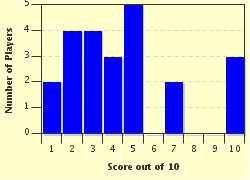Quiz Answer Key and Fun Facts
1. In the precolonial Brazil, the area that is now Sao Paulo was occupied by various native tribes headed by a cacique. What is the name of the cacique of the Tupiniquim tribe who converted to Christianity in the mid 16th century?
2. The construction of which building, that still stands today, in 1554 marked the official founding of Sao Paulo?
3. Which of the following was NOT a reason the newly founded city of Sao Paulo remained poor and sparsely populated for nearly a century?
4. Meaning flag bearers, bandeirantes came to Sao Paulo in the late 17th century for what reason?
5. What now stands on the location in Sao Paulo where Brazilian independence announced by Emperor Dom Pedro I of Brazil on September 7, 1822?
6. After Brazilian independence, what was the main cash crop in Sao Paulo?
7. Announced by Isabel, Princess Imperial, what was the 1888 Lei Aurea?
8. Politically speaking, what is meant by the phrase "café com leite" or "coffee with milk"?
9. What is the name of the future president of Brazil who led a coup in 1930 after losing the presidential election that same year?
10. Like in many Brazilian cities, 2013 saw a wave of protests that are sometimes called the Brazilian Spring. Although the protests became internationally known for standing up against police brutality and political corruption, what caused the protests in the first place?
Source: Author
Joepetz
This quiz was reviewed by FunTrivia editor
bloomsby before going online.
Any errors found in FunTrivia content are routinely corrected through our feedback system.

